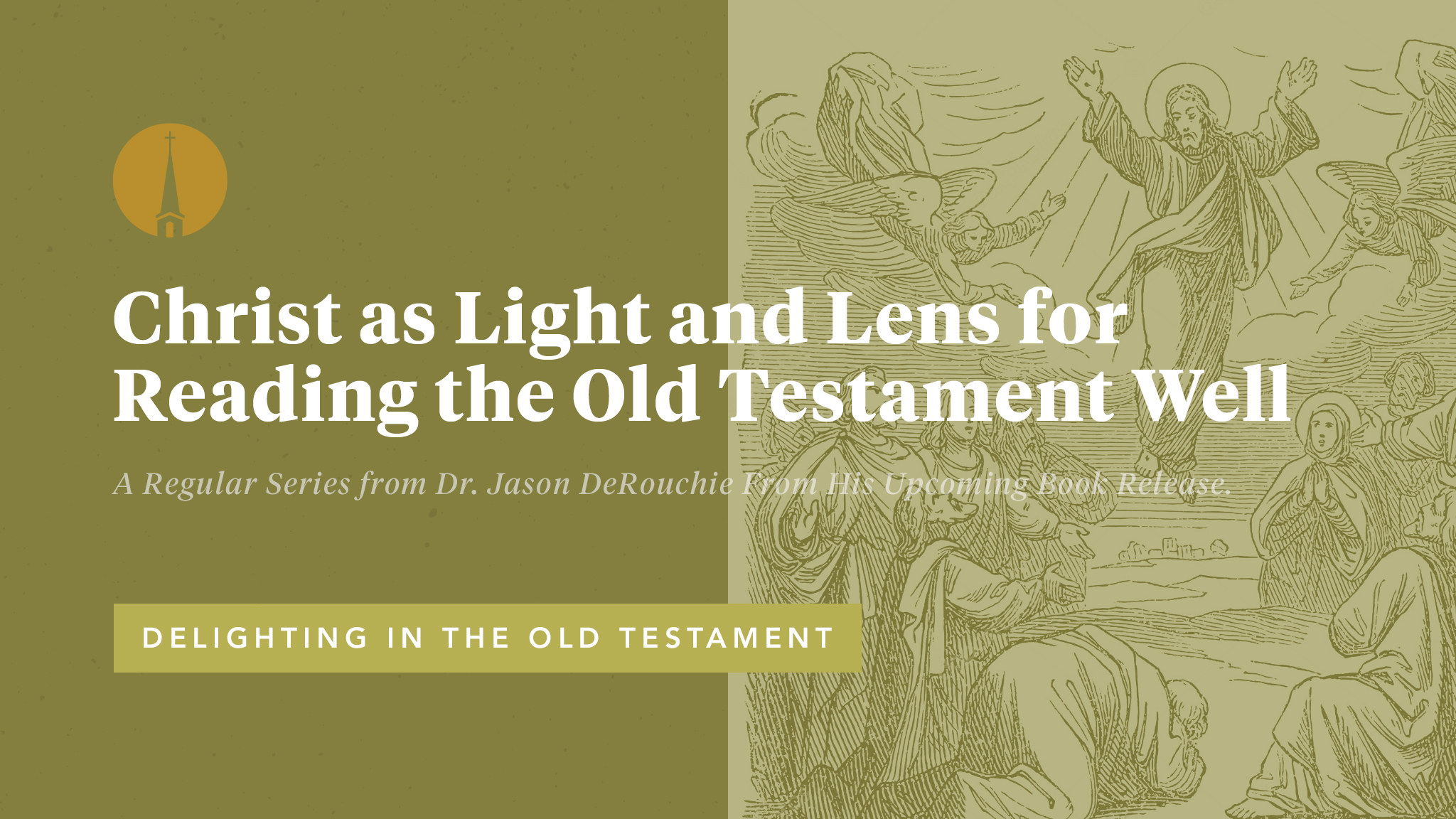
While the Old Testament prophets appear to have understood most of what they declared, God did not allow the majority of those in the old covenant to understand the prophets’ words (e.g., Isa 6:9–10). And as a judgment, the people’s blindness continued into the days of Christ (Matt 13:13–15)1. Nevertheless, fulfilling Old Testament predictions (e.g., Deut 30:8), Jesus’s teaching and work began disclosing to his disciples truths that remained distant from the crowds: “To you has been given the secret [Greek mystērion] of the kingdom of God, but for those outside everything is in parables” (Mark 4:11–12).
The New Testament’s “mystery” language appears to come from the book of Daniel, where the Greek translation uses the term mystērion (“mystery”) to render the Aramaic rāz (2:18–19, 27–30, 47). King Nebuchadnezzar has a troubling dream and then looks to Daniel for the full interpretive revelation. The “mystery” that God revealed to Daniel (v. 19) included both the initial dream and its interpretation, as the God in heaven “who reveals mysteries … made known to King Nebuchadnezzar what will be in the latter days” (v. 28). When Jesus alludes to this text by speaking about the “secret of the kingdom” (Mark 4:11–12), he indicates that the Old Testament’s message would remain permanently hidden for some but temporarily hidden for others.
Mystery in the New Testament
The New Testament employs the Greek word mystērion twenty-eight times, all as a technical term for an end-time reality largely hidden in the Old Testament but now disclosed more fully through Christ. All the New Testament occurrences deal with the end-times and are in some way linked to the Old Testament.
What was this “mystery”? In the Synoptic Gospels, the “mystery” relates to the unexpected, gradual, already-but-not-yet fulfillment of God’s end-time reign (e.g., Mark 4:11). In Paul’s epistles, which comprise twenty-one of the term’s New Testament occurrences, the revealed “mystery” or “mysteries” refer to insight into God’s end-times purposes (e.g., 1 Cor 4:1) most directly associated with more fully understanding Christ and the gospel (e.g., Rom 16:25). In Revelation, “mystery” relates to the nature of the church (Rev 1:20) and the self-destructive nature of Babylon (17:5, 7).
What Mystery Implies for Interpreting the Old Testament
Jesus, Paul, and John speak of God revealing a “mystery” to communicate how, in Christ, we gain full disclosure of things that God significantly hid from most in the old-covenant era. Strikingly, as Romans 16:25–27 teaches, the very “mystery” that is now revealed in and through Christ is also now made known to all nations through the Old Testament itself. In the coming of Christ, an era of understanding replaces an era of ignorance as light overcomes darkness and as God grants a fresh perspective on old truths (cf. Eph 3:4–5).
Still, G. K. Beale and Benjamin Gladd rightly affirm that “full or ‘complete’ meaning is actually ‘there’ in the Old Testament text; it is simply partially ‘hidden’ or latent, awaiting a later revelation, whereby the complete meaning of the text is revealed to the interpreter.”2 These parallel truths bear at least three implications for interpreting the Old Testament as the Christian Scripture it is: (a) Only those with spiritual sight can interpret the Old Testament correctly. (b) Jesus’s life, death, and resurrection provide a necessary lens for fully understanding the Old Testament’s meaning. (c) There is an organic relationship between the Old Testament’s testimony and the meaning the New Testament authors attribute to it.
A Relationship with Christ Is Necessary to Understand the Old Testament Rightly
Regarding many of his Jewish contemporaries, Paul declared, “For to this day, when they read the old covenant, that same veil remains unlifted, because only through Christ is it taken away” (2 Cor 3:14). Those who understand “God’s mystery, which is Christ” (Col 2:2), are those to whom God has given “the light of the knowledge of the glory of God in the face of Jesus Christ” (2 Cor 4:6). Indeed, Christ is “the radiance of the glory of God” (Heb 1:3), and by his Spirit, he enlightens the eyes to see what the Old Testament revealed all along (Eph 1:17–18).
To have the “mystery” of God’s kingdom purposes revealed means, in part, that one’s spiritual eyes have been opened to properly understand the Old Testament. Through rebirth, we become spiritual people who can spiritually discern and rightly understand spiritual truths (1 Cor 2:13–14). True Christians are the only ones who can rightly grasp all that God intends to communicate through the Old Testament.
Christ’s Person and Work Clarify More Fully the Old Testament’s Meaning
The Old Testament is filled with declarations, characters, events, and institutions that bear meaning in themselves but also find that meaning enhanced and clarified in Christ’s person and work. For example, the meaning of events like the exodus or of objects like the sacrificial lamb are amplified when the New Testament treats Christ’s saving work as an “exodus” (Luke 9:31) and calls him “the Lamb of God, who takes away the sin of the world” (John 1:29). Jesus’s triumph validated him as the ultimate object of all Old Testament hopes, and this, in turn, transformed the apostles’ reading of the Old Testament (John 2:22; 12:16).
Once Paul met the resurrected Christ, he, too, never read the Old Testament the same way. Indeed, as an Old Testament preacher, he “decided to know nothing … except Jesus Christ and him crucified” (1 Cor 2:2). At no stage in interpreting the Old Testament should Christians act as if Jesus has not come. Reading from the beginning through Scripture gets us to Christ, but once we find him, we must interpret all the Old Testament through him.
The Way God Discloses the Mystery of Christ Signals Organic Connections between the Old and New
Passages such as Roman 16:25–26, 1 Peter 1:10–11, and 2 Peter 1:20–21 imply that the New Testament’s use of the Old Testament is natural and unforced, aligning with the Old Testament’s own innate meaning, contours, structures, language, and flow. The New Testament authors are making organic connections with the whole of Scripture on its own terms, in alignment with God’s original intentions.
Other passages, such as Colossians 2:16–17, testify that the prophets often envisioned the very form we now enjoy, not only seeing the shadow but also embracing the substance that is Christ, though perhaps more like an acorn or sapling anticipates a great oak. Even if the Old Testament authors were not fully aware of all God was speaking through them, they would have affirmed retrospectively the trajectories that later biblical authors identify.
Christ as Light and Lens
Scripture calls us to see both an organic unity and a progressive development between the Old and New Testaments. There is a natural connection between what the Old Testament human authors intended and what the New Testament human authors saw fulfilled in Jesus, but the Old Testament meaning is now often fuller, expanded, or deepened because through Christ God reveals the mystery. Jesus’s saving work supplies the spiritual light that enables one’s spiritual senses to see and savor rightly, and his person and work provide the interpretive lens for properly understanding and applying the Old Testament itself in a way that most completely magnifies God in Christ. Figure 1 unpacks what is happening with respect to Scripture’s progressive revealing of Old Testament meaning, and figure 2 elucidates further the way Christ operates as a lens, supplying us a developed understanding of the Old Testament’s meaning.


Conclusion
The Old Testament is Christian Scripture, and God intends that we interpret it as such, not as if Christ has not come. We must read the Scripture forward, backward, and forward again. The Old Testament prophets knew they were writing for new-covenant saints living in the days of the Christ. Bound up in the gospel of Jesus Christ is the revelation of a “mystery that was kept secret for long ages but … through the prophetic writings has been made known to all nations” (Rom 16:25–26).
A relationship with Jesus is essential for rightly interpreting the Old Testament, for through him God enables understanding. By turning to Christ, “the veil is removed” (2 Cor 3:16). The light of Christ supplies us the needed spiritual sight for understanding the things of God, and the lens of Christ’s life, death, and resurrection provides the needed perspective for fully grasping the Old Testament’s meaning. God wrote the Old Testament for Christians, and he enables believing interpreters to grasp more fully than others both the meaning and the intended effect of the initial three-fourths of the Christian Scriptures.
1: See G. K. Beale and Benjamin L. Gladd, Hidden but Now Revealed: A Biblical Theology of Mystery (Downers Grove, IL: InterVarsity Press, 2014), 29–46.
2: Beale and Gladd, Hidden but Now Revealed, 330.
This blog series summarizes Jason S. DeRouchie’s forthcoming book, Delighting in the Old Testament: Through Christ and for Christ (Wheaton, IL: Crossway, 2024). You can pre-order your copy here.

